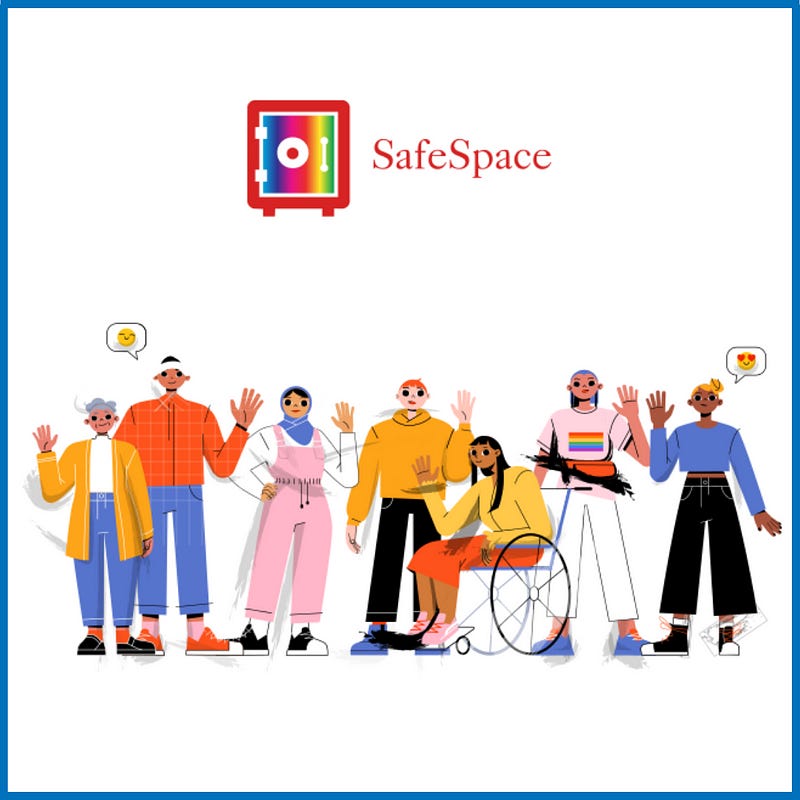Anonymous Feedback: Creating More Critics or Patrons?
Anonymity can more or less be synonymous with freedom. To be able to express yourself in whatever way you would like is freedom. There are…

Anonymity can more or less be synonymous with freedom. To be able to express yourself in whatever way you would like is freedom. There are no strings attached, and therefore, there is a certain sense of power that comes with this. However, with power comes exploitation.
Anonymous feedback has long been a topic of debate among companies. If you didn’t know, there are two types of anonymous feedback in an organization. The first kind of anonymous feedback is directed toward the organization itself. For example, a suggestion box where employees can share their ideas and feedback regarding the company itself, the second kind of anonymous feedback is directed toward an individual employee. This is a review in which colleagues rate each other based on performance.
Critics of anonymous feedback point out that when individuals have negative opinions and pre-conceived notions of a company/superior management or fellow employee, there is no doubt that they will exploit this ‘anonymous feedback’ system to get back at them. This is damaging not only to the morale of the office but also to the organization’s productivity. As with unhappy employees who are always looking over their shoulders, people are less inclined to express themselves fully, thus compromising productivity.
However, when you look into it, anonymous feedback is not the enemy here; it’s really about how you regulate the system.
Let’s talk about this.

1. Steps You Can Take to Try to Filter Out the Spam
Let’s start with the basics: Training your employees. Organizations have various workshops and group activities every other week to build stronger bonds and create a safe space where people can fully express themselves.
A session on how to differentiate between what is a genuine concern and who is just taking out personal grudges would be extremely beneficial for the whole company. Remember, it all starts with how you treat your employees. You set a precedent for the whole company and inspire how the employees will treat each other.
Encourage people to look at the positive aspects of things.
There is a saying that the best managers in the world follow the ‘ no BS’ rule. This means they lay everything out on the table, no fluff, no beating around the bush. To be upfront with what you have to say takes courage and strength. This is a trait not many people have, especially in the workforce.
The whole issue with exploiting the anonymous feedback idea is that people will give you negative feedback while remaining anonymous. This is because not everyone can be direct with their thoughts and feelings. They hope to hold up a mirror to you while giving in to their ‘non-confrontational’ nature and staying anonymous allows them to do exactly that!
Teaching your employees to be upfront with their negative feelings can be an asset to the work culture that can only add positivity and constructive feedback.
Speaking of constructive feedback:
2. Train Employees on How to Give Out Constructive Feedback
A culture of giving out constructive feedback will be one of the best things to happen to your company. Companies grow exponentially when their professional progress is at its fullest. For this to happen, many companies rely on constructive criticism, where one employee shares positive feedback that only serves to improve the matter at hand. Training to have your employees give constructive criticism wherever possible will only stand to benefit your company.
Build your company culture in a way that curbs personal biases in your company. This reinforces the idea that criticism involving personal bias for the sake of bashing the organization or an individual employee will not be tolerated. What is more, such feedback will not even be taken seriously.

3. Carefully Think Through Your Reaction (as a manager) to the feedback:
We’ve gone over how to give out positive feedback. That’s done and dusted. Now, equally important is to address how to receive feedback.
Because how you (as a manager) react to (both good and bad) feedback greatly determines what kind of feedback you will receive in the future.
When employees see you not addressing the concerns you raised with your anonymous feedback, one or both things are likely to happen:
- They are likely not to be serious about pouring their hearts out to you again
- They may even begin sharing their perceptions of you and the organizations.
Which you were hoping to avoid since day one. Whipping out harsh disciplinary practices or reacting abruptly brings down morale as well.
Therefore, a regulated system where employees are kept informed about the status of their complaints and then advised on permanent and careful strategies is the most important aspect of your anonymous feedback collecting system. It is important to make your employees feel that all their respectful and relevant feedback is accepted, acknowledged, and followed through till the end.
4. Use a Platform to Maybe Also Highlight the Positive Aspects.
At the end of the day, we are humans. There are going to be slip-ups. There are going to be accidents. No matter how often managers try to have a clean, undisrupted method of giving anonymous feedback, there are still times when there can be interference and disorganization.
Here, we can rely on platforms that can make this process as smooth as possible. Using a platform ensures anonymity while also upholding the rules and regulations. Because of this, managers themselves don’t feel like complete failures. SafeSpace is what comes to mind here.
When using SafeSpace, you do not need to worry about any external interference. Let’s take a look at how this works:
- Employees get access to the company’s QR code for SafeSpace from the organization’s internet portal.
- Employees then launch the app. This can be done from anywhere, even on a non-work device.
- They can then choose the ‘Report an Issue’ and describe the problem that they are facing. Then they select whether the issue was faced by them or a coworker.
- The employee gets connected with a SafeSpace HR manager.
- The HR manager then collects information and evidence and asks a series of questions to verify the problem and filter out the spam. Meanwhile, the employee who reported the issue is given a unique code to track the progress of the investigation. They are also advised of anonymous counseling and coaching resources available through SafeSpace.
- The HR manager checks the issue reported with the company’s existing policies, all while maintaining the employee’s anonymity.
- The HR manager updates the status of the investigation. The employee who reported the case is then asked if they would like to proceed further with sharing details of the cases if previously the employee was not sure on policies or whether they want to share details with the organization yet.
- Additionally, SafeSpace has investigation as a service where one of our experienced HR personnel provides an objective administration of the investigation process conducted by the organization. Towards the end, facts and findings are shared with the company’s leadership so they can aid in resolving matters.
- The company’s executive leadership is given a statistical report of the problems faced by the employees every month. This report includes feedback and how satisfied employees are with the resolution of cases.

It’s easy, safe, reliable, and convenient. What could be better?
Conclusion:
Feedback, in its entirety, should not be shied away from. In today’s age of workplace bullying, mistreatment, and harassment at the hands of employers, we can benefit heavily from giving feedback anonymously.
It should be encouraged and regulated. While doing so, if you come across an app or platform that makes this process easier for you, why not go through with it?
Read more about SafeSpace here: https://makesafe.space
Originally published at https://www.linkedin.com.




